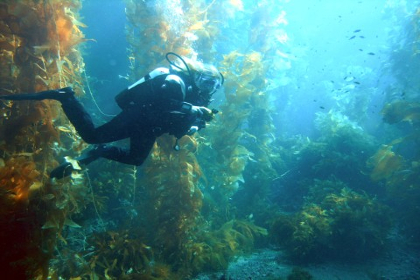
Kelp’s Nutritional Benefits
You’ve heard all about all the incredible qualities of kale, but now a shift in the food industry is looking starboard toward the superfood characteristics of kelp.
Kelp is one of several seaweed varieties growing in coastal regions around the world, from Japan to Ireland, and the U.S. Coming in black, green, red and brown, some are small; some are so gigantic they form a sort of bed or cushion on the ocean floor and can be seen growing thickly on shorelines.
June 20, 2016 | Source: Mercola | by Dr. Mercola
You’ve heard all about all the incredible qualities of kale, but now a shift in the food industry is looking starboard toward the superfood characteristics of kelp.
Kelp: What Is It, Really?
Kelp is one of several seaweed varieties growing in coastal regions around the world, from Japan to Ireland, and the U.S. Coming in black, green, red and brown, some are small; some are so gigantic they form a sort of bed or cushion on the ocean floor and can be seen growing thickly on shorelines.
According to Organic Facts, an online website that provides unbiased information on various food items:
“Giant kelp, which is one of the largest plants in the world, grow enormously and stand like an underwater tree with its roots at the foot of the sea. Unlike a weed that grows liberally and can be harmful to the area it dwells in, seaweed plays an extremely vital role for the marine life.
It serves as a foundation for the majority of the food chains and provides home to a number of marine creatures. In addition to this, seaweed possesses anti-microbial and anti-inflammatory properties that have been trusted for providing health benefits to the humans from ancient times.”1
Also called a sea vegetable, this marine algae is like a leafy green grown in a seabed rather than a garden bed. It’s quite popular in coastal areas of Japan, no doubt because it’s so abundant. Many Japanese claim it’s one of the reasons for their longevity.
Kelp Versus Kale
Comparing kelp to dark, leafy green kale is interesting, as both plants contain quite different nutrient amounts, especially when you examine the Dietary Reference Values (DRV), which give you the daily nutrient recommendations for all foods. For example, kale has more antioxidants than any other vegetable.
Kale is an excellent source of vitamins A, C, K and B6, calcium, potassium, copper and manganese. More specifically, according to the DRV, it contains 684 percent of vitamin K, 206 percent of vitamin A and 134 percent of vitamin C.
Its sulforaphane content protects against cancer, as does indole-3-carbinol, which also aids in DNA cell repair.
Kelp, aka brown seaweed, contains high amounts of iodine, potassium, magnesium, calcium and iron, as well as vitamins, antioxidants, phytonutrients, amino acids, omega-3 fats and fiber, together relaying impressive health benefits that are hard to ignore.
